Editors’ Picks





Found in Robotics News & Content, with a score of 9.14
…a tipping point of futureproofing and automating operations to gain a business edge. Through the cloud-based Nokia AIMS user interface, warehouse operators can compare counts performed by autonomous drones with WMS or ERP data. Source: Nokia AIMS The new inventory-counting capability adds to Nokia AIMS’ current features of finding misplaced and lost inventory, as well as empty bin detection. If a human worker can count inventory from the aisle, the company said a Nokia AIMS drone can count it too. Identified inventory counts are then compared with warehouses’ existing warehouse management system (WMS) or enterprise resource planning (ERP) systems to…

Found in Robotics News & Content, with a score of 9.11
The two guests on this episode are from SICK's corporate headquarters in Germany - Michael Repplinger, Head of Product Management for Mobile Platforms, and Michael Dold, Strategic Industry Manager for Industrial Vehicles. They have a discussion with our host, Rolf Agner, about some trends they are seeing in the industry and why SICK is excited about robotics. By listening to this episode, you’ll gain insights on: Industry trends for mobile platforms Different sensor solutions available to optimize mobile platforms How AMRs are changing the material handling industry Subscribe the On Air with SICK USA wherever you get your podcasts!

Found in Robotics News & Content, with a score of 9.10
…solutions to overcome the last mile delivery issues will gain in the battlefield of supply chains. Latest trends point to emerging practice of Direct to Customer (D2C) over reaching customer via Distribution Centers (DC2C). One must keep in mind that this strategy is not just about eliminating a middle layer in the supply chain. As opposed to this, it is to gain efficiencies just by adopting automation and technology to eliminate a dispensable layer. Economies of scale is a driver to adopt this strategy and hence large players benefit from this. A centralised warehouse that caters to one or more…
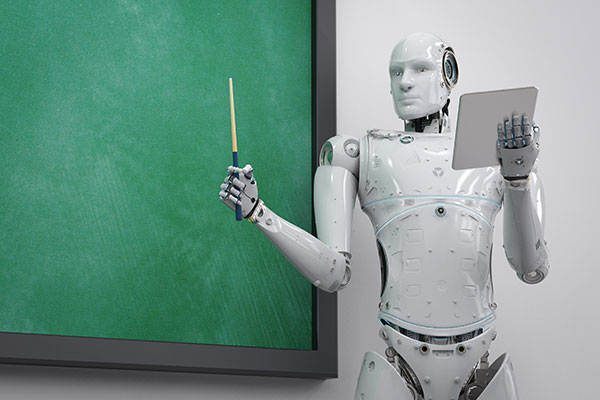
Found in Robotics News & Content, with a score of 9.04
…seasonal associate using Chuck. Assuming a typical 100% rate gain, the Chuck-enhanced associate (illustrated in blue) will reach full productivity at 160 UPH. As illustrated in the graph above, although the associate using carts to pick (the red line) is at their full UPH at the end of peak, their average rate over the entire period is only 57 UPH due to their slow ramp-up. The associate using Chuck, however, hits their stride very quickly and averages 152 UPH. In our last scenario, Chuck provided a 100% gain to your long term workforce. For seasonal workers, it provides a much…

Found in Robotics White Papers & Archives, with a score of 9.00
…in distribution or fulfillment operations: Goods-to-Person and Person-to-Goods. Although they may seem similar at first, the productivity and efficiency gains are very different. Goods-to-Person AMRs bring items to associates or robotic picking arms for order fulfillment, eliminating walk and search time. Conversely, Person-to-Goods AMRs support associates as they travel through the aisles, picking needed items like a shopper in the grocery store. This whitepaper compares the two styles to help operations determine which type works best in their application. Which Type Works Best for Your Warehouse Application?
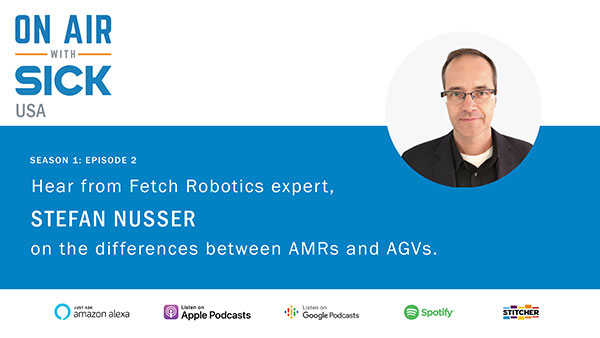
Found in Robotics News & Content, with a score of 8.83
Stefan Nusser, Chief Product Officer at Fetch Robotics oversees product strategy for all Fetch robots and solutions. Stefan discusses the differences between autonomous mobile robots (AMRs), automated guided vehicles (AGVs), and automated guided carts (AGCs). He also discusses how Fetch is helping during this global pandemic. By listening to this episode, you’ll gain insights on: How AMRs have changed the game in many different industries What Fetch Robotics is doing to provide help during the global pandemic Whatsensor solutions help you make the most of your AMRs Subscribe the On Air with SICK USA wherever you get your podcasts!
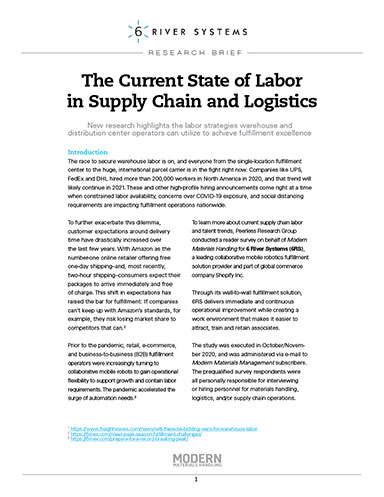
Found in Robotics White Papers & Archives, with a score of 8.81
…Prior to the pandemic, retail, e-commerce, and business-to-business (B2B) fulfillment operators were increasingly turning to collaborative mobile robots to gain operational flexibility to support growth and contain labor requirements. The pandemic accelerated the surge of automation needs.
Found in Robotics News & Content, with a score of 8.13
…open source streaming analytics through Siemens’ MindSphere. Users will gain access to SAS advanced and predictive analytics in MindSphere, which can accelerate the adoption of machine learning (ML) and artificial intelligence (AI) in Internet of Things (IoT) environments. Siemens and SAS will collaborate to engage with new and existing customers and, beginning with streaming analytics, enable near-real-time embedded AI for IoT devices at the edge. The partners expect the solutions to be generally available later this year. “SAS is a recognized world-leader in advanced analytics, machine learning and artificial intelligence. We are excited to leverage their analytics in MindSphere,” says…
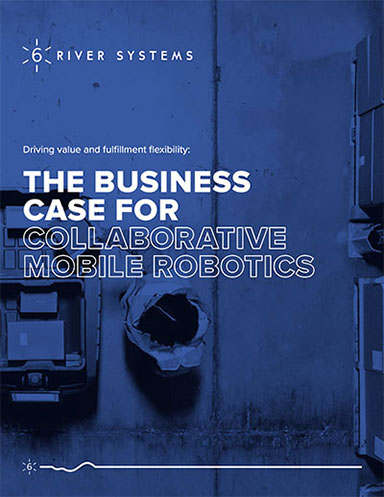
Found in Robotics White Papers & Archives, with a score of 8.05
…were increasingly turning to Collaborative Mobile Robots (CMRs) to gain operational flexibility and maintain growth. Early efforts to meet the unexpected demand have included retooling warehouses to handle the increase in each picking and launching or expanding fulfill-from-store initiatives. Now, more than ever, supply chain leaders know that fulfillment is the key to differentiation, and in some cases, survival. Because of this new reality, CMR providers expect to see a surge in demand as operators implement new strategies to provide cost effective fulfillment services in an uncertain labor market. Based on interviews with more than 25 supply chain leaders worldwide…
Found in Robotics News & Content, with a score of 7.87
…to boosting stalled labor productivity and unlocking overall productivity gains for manufacturers. “Manufacturing output may be 11% of U.S. gross domestic product, but its total value chain for the economy is three times that,” said Stephen Gold, president and CEO, MAPI. “Digital transformation will likely only increase manufacturing’s importance and competitiveness. This new research provides excellent insights for manufacturing leaders trying to propel their digitalization journey, regardless of the current state of their operations.” Smart factory initiatives could lead manufacturers to experience labor productivity increases of 4%, as per the study, which represents a threefold improvement over the past decade’s…

Found in Robotics News & Content, with a score of 7.85
…conducted by the Robotics Society in Finland, independent advisors Gain & Co., and online marketplace HowToRobot.com. “The integrators in Finland are automating things that no one else is willing to do,” Latokartano said. “They are crazy enough to do it – and succeed.” Robots laser-clean fighter jets Examples of the niche applications that robotic companies in Finland are taking on include laser cleaning of body parts for the F-35 combat aircraft, arc welding of cruise ships, and robotic waste sorting using machine learning (see below). Automating such complicated tasks requires special knowledge to be a profitable investment, according to Søren…
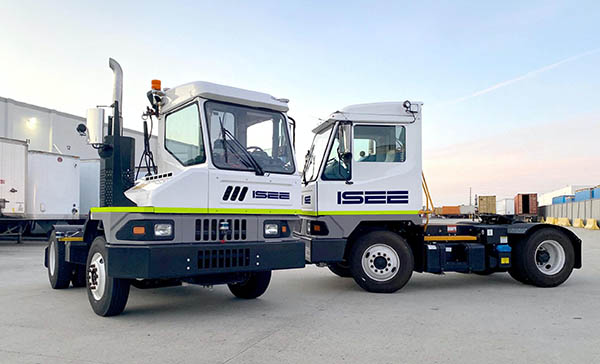
Found in Robotics News & Content, with a score of 7.83
…can expect the unexpected. Source: ISEE Partners expect efficiency gains Not only has Maersk Growth invested in ISEE, but the world’s biggest logistics company is also collaborating with it on a number of projects. “Through their humanistic AI approach, ISEE has in just a few years achieved very strong performance and proof points for use cases in logistics,” said Peter V. Jorgensen, partner at Maersk Growth. “Our joint warehousing pilots have validated how ISEE’s platform enhances efficiency and safety, and we look forward to implementing these improvements to enhance our competitiveness globally.” ISEE also announced a joint project with Lazer…



